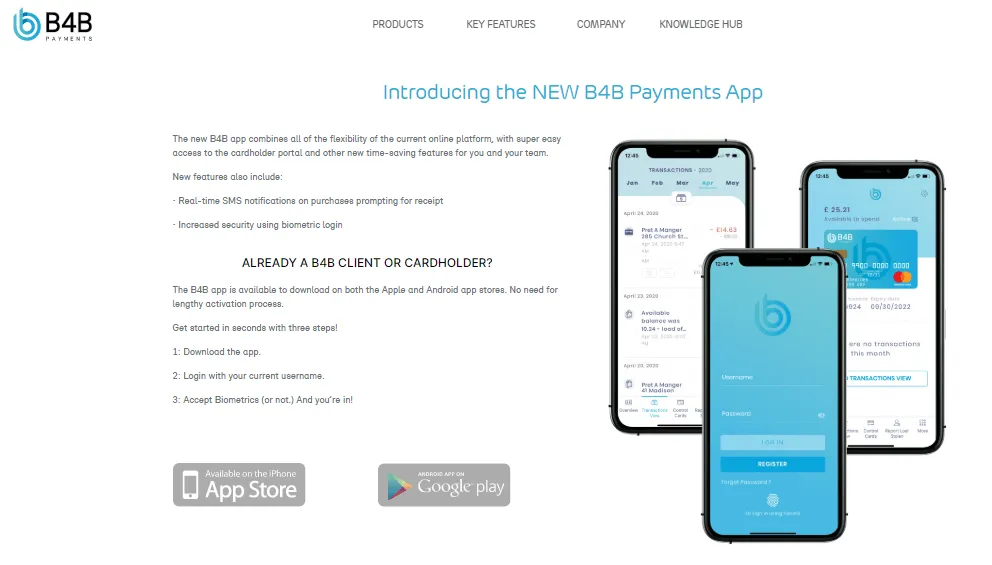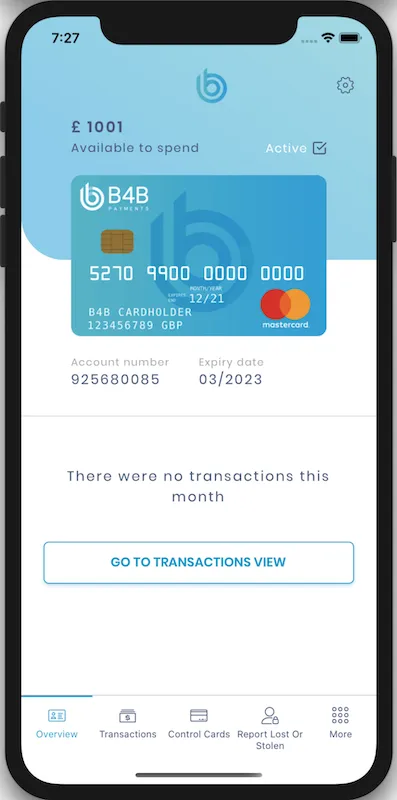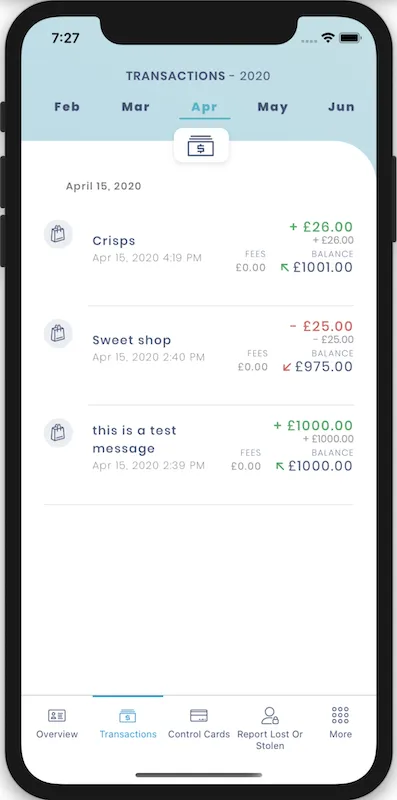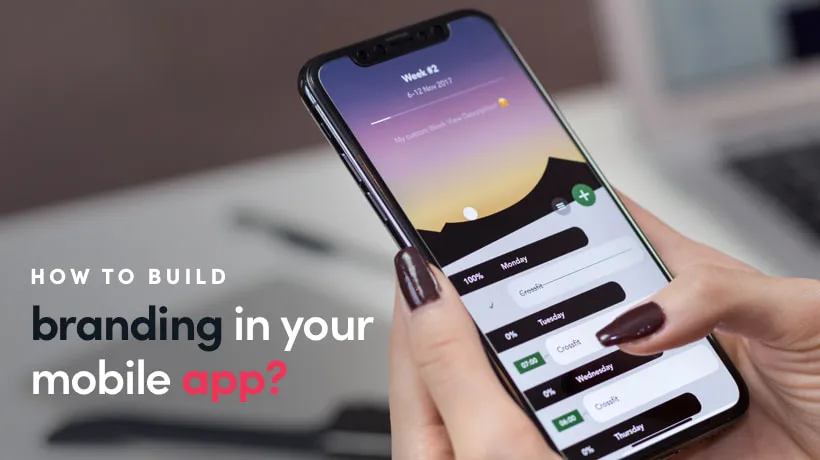With thousands of mobile apps being launched every day, how will you make sure that your app will stand out among all other apps in the niche? Well, it all depends on the design, functionality, and branding of the app. Yes, along with the design and functionality, the correlation of branding in the mobile app is essentially important. The Logo or the App Icons is the first thing that appears when users start searching for your app. Believe it or not, a logo or app icon does say a lot about your branding.
According to Statista, as of Q1 2020, there were 2.56 million apps available at Google Play Market and 1.85 million apps available at Apple’s App Store. Competing against such a huge number needs a lot of work. You need to understand that nowadays a mobile app not only needs to be of high quality but strongly branded to compete. It is very important to adopt a mobile-first approach to implement a branding strategy in the app successfully.
If you want to build a brand for your mobile app to stand out from the crowd, you need to learn to create an effective mobile app branding.
What is Mobile-App Branding?
Branding is one of the first steps for any marketing strategy. Without proper branding, your product will remain nameless and lost in the pile of unsuccessful products. Branding helps businesses to create an identity in the minds of people. Let’s check the simple definition of Branding.
Branding is a set of activities conducted through a set of distinguishing features. It is an act of promoting awareness and recognition of the product or service on the market. Through proper branding, a product creates its identity in the market.
sWhen it comes to mobile app branding, it is a complex structure of a variety of factors such as the name of the app, log of the app (main identification of the company or product), font color (it should match or compliment the logo), the background of the app (it should complement your product or service), slogan of the app, description, and details of your service or product.
To understand how to build a branding strategy for your mobile app, let’s discuss why mobile app branding is so important.
Why Mobile-App Branding is Important?
Here’re a few pointers to define the importance of building a mobile app branding strategy.
Users may forget the name of your product or company, but if it is played right with an attractive logo and combination of catchy words, it remains memorable for users.
Most users provide their first-hand feedback on using the app and leave. If the customers' feedback is shared humbly and responded promptly, then you can get your identity as a brand that listens to its customers.

Creating a brand image helps users to remember your company name like Coca-Cola, Nike, Adidas, etc. It makes the identity of your company in your customers’ minds.
Good branding strategy involves personalization at the greatest level. Keeping your customers in mind, you can create an offer which they cannot refuse. By giving a personalized touch in your branding strategy, you can make your customers feel important.
Now let’s discuss some of the main features of branding.
Try our developers.
Free for 2 weeks.
No risk. Just results. Get a feel for our process, speed, and quality — work with our developers for a trial sprint and see why global companies choose Selleo.
Core Features of Branding
Branding aims to establish a significant and differentiated presence in the market that attracts and retains loyal customers. An excellent mobile app branding strategy consist of the following features:
Targetability
The entire world can’t be your target audience. Your target audience is specific to the needs that your product or services fulfil. A business should first identify their target audience and plan the strategy accordingly. The branding strategy should be created after knowing the basics of your target audience, such as their age, income, gender, lifestyle, and buying habits.
Brand Awareness
Creating brand awareness is very important. It can increase your audience reach by planning and executing marketing and advertising efforts. The logo of the app should be well-thought and attractively designed to increase the popularity of the brand.
Brand Loyalty

A good branding strategy doesn’t end by creating only an identity of your product or service. But, as people start knowing what specific way your product is benefiting them, they become brand loyal. Add more affordances in your branding strategy to create a brand loyal customer by keeping in touch with them, such as congratulating them on their big day like birthday, mother’s day, etc.
Brand Consistency
Customers always have expectations from your product or services. So, keeping consistency in your brand strategy, along with the newest innovation, is very important. All the claims you made for your brand should be fulfilled.
Now, let’s move on to the most important part of this article and see how to build a branding strategy for our app.
How to Build a Branding in your Mobile App – Branding Strategies
The main motive of this article is to give an idea of how to build branding in a mobile app. Let’s discuss some major steps that every business should consider while designing the strategy for their app branding.
Keep User Experience in Mind
The customer is KING. Every business should remember this golden rule to achieve more success. Similarly, when you are developing an app or have developed the app, it should be after detailed research about what your customers want. Make a list of things that your customer is searching via your app. Find out more details by research. Once you get a good idea of your customer demand, you will be able to create a user-centric brand.
Logo and App Icon
What do you think, is your logo should be your app icon? Well, most businesses do use the logo of the company as the app icon. The practice is not wrong but not recommended by the experts. For creating a successful mobile branding strategy, you need to understand that a logo of your website is not the app icon.
The major difference between a logo and app icon is the dimensions and shape. Logo can be created for a particular size and proportion, whereas, for an app icon, you need to consider the limitation of app stores. It should be designed with every possible resolution.
User Interaction
Adding options through which users can keep interaction with the app is the best strategy. For all non-gaming apps, you can add features like leaderboard, badges, challenges, bonuses, ratings, and reviews for user motivation. Using graphics in brand stylistics support brand awareness and make your app recognizable to users. You can add options where users can achieve higher scores that they can share with their family and friends. It will also increase your app’s reach and visibility.
Refer a Friend
Continuing the above point about user-interaction, there’s one more strategy that works like a charm. Having an option to earn points, bonuses, and extra discounts via referring the app to a friend helps you increase brand visibility. More people refer the app to their friends. The more downloads you will get. The number of downloads helps your app rank on a higher position on app stores for relevant keywords.
App Name
Before building the app or even started designing a strategy, you should select a name for your app. Your App name should be in connection with the functionality of the app. It should be different, short, and memorable.
Landing Pages for the App
A landing page is a web page that emphasizes a specific aim and a quick call-to-action. Building landing pages that correlate with the website is very important for a mobile app branding. The landing page purpose is to provide a direct download link for the mobile app and brief details about its uses and advantages. Various other landing pages for the mobile app can be created according to the needs of the target audience. We can take a good example of the “How to Installation Process,” which can be covered in detail on a landing page.

Built-in Support and Service
Customer services have become a backbone for every brand. The option is very important for your branding strategy. Your app should provide an option to users where they can contact someone related to their issues, queries, and feedback.
We have talked about branding and how to create branding in a mobile app. Now, let’s move on to the next part where you learn about things that you should know before creating a branding strategy for your mobile app.
Mobile App brand -The questions you should ask yourself before building branding?
Before you start building a brand for your app, you should consider answering these questions so you will have a clear path where you need to go. Answering these questions will validate your idea of branding your mobile app.
These questions are:
- Who is going to use your app, and why?
- What is your unique selling point?
- What makes your app unique in comparison to other apps?
- What does the look of your app say about it?
- Which feelings does your app evoke?
- What is the tone of your app?
- What are the channels of communication with users?
- How will users get information about your app?
Note: If you are considering branding your mobile app, we have a perfect package at Selleo. We have experienced a branding specialist who will do the job nicely. With years of experience, our team will research your target audience and keep it under consideration, and your goals will be to develop an outstanding branding activity.
Let us explain to you more how, we at Selleo, have taken an out-of-the-box approach to developing fintech applications.
What was our approach during developing the Fintech Application?
- Our first step was to make sure that the mobile app's design is as per the expectations of our target audience.

- After several tests and trials, we made iterations in the mobile app design to improve the UI/UX with an eye-catching design.
- After accepting the branding designs, we started implementing layouts into real-world screens in the mobile application. During this phase, we found a major space for improvements in UI. We added these improvements while building the app constantly with the help of our expert designers. These designers not only meet your expectations but will also guide you with better ideas for the app look and feel.

- After all branding designs were implemented, the application was given to a small group of Quality Assurance people, who gave us the feedback to help us improve our branding functionality.
- After the final QA from our employees and the selected group, we released the application officially into the market, knowing that everything will work fine.
To better communicate our point, let us explain in detail about the unique branding features we adopted.
What was the unique branding feature?
The feature that makes our application unique was the ability to change its branding depending on the customer's needs. The company needed to change its branding, and we provided a way to do it smoothly.
- As the technology chosen for the project was react-native, the most convenient way to provide such functionality was to use the Context API provided by the React.js library.
- As the first step, we have to make a BrandingProvider. It may look like this:
- Next, we must wrap our application with BrandingProvider
- In the end, all we need to do is to consume data that is provided by BrandingProvider:
This is how we did it to make our clients satisfied.
Wrapping Up
Do keep this in mind that building branding for a mobile app is a very thoughtful process that needs plenty of attention at many levels. But if done in the right way, a mobile app branding can increase your sales and the popularity of your product or services.
The main components of a branding strategy are the target audience and UI/UX design. The simple the interface is, the better the results will be. People like a simple and easy-to-use interface, but you can always research and check your customers' demands.
Want to build your own solution or need help with improving your existing one? Our FinTech team of specialist will be happy to work with you!





